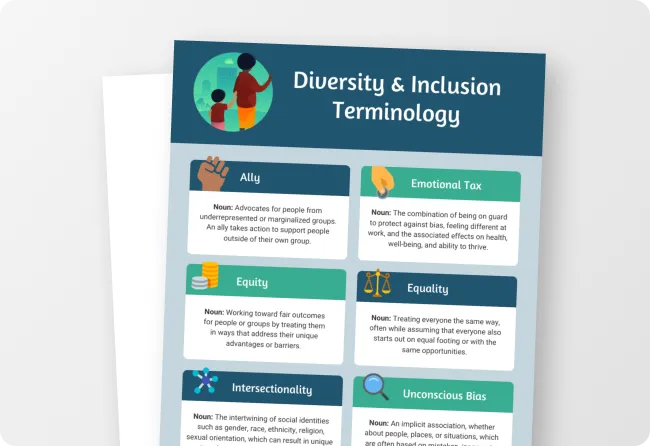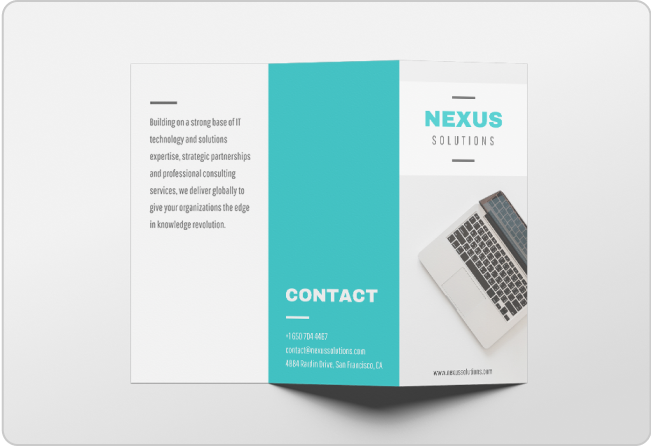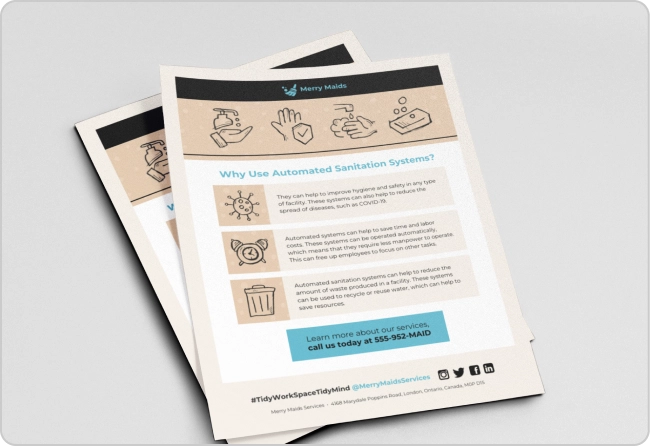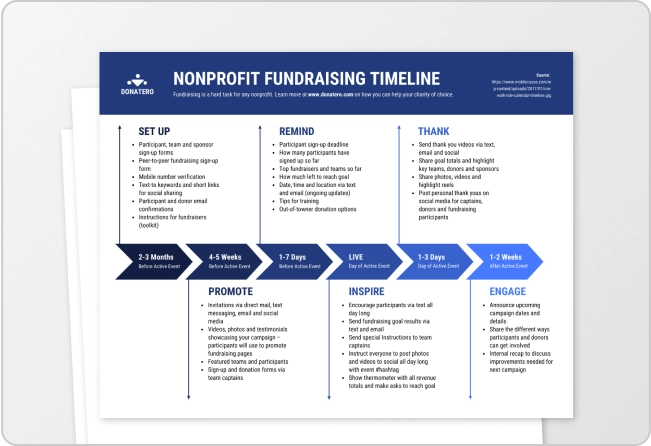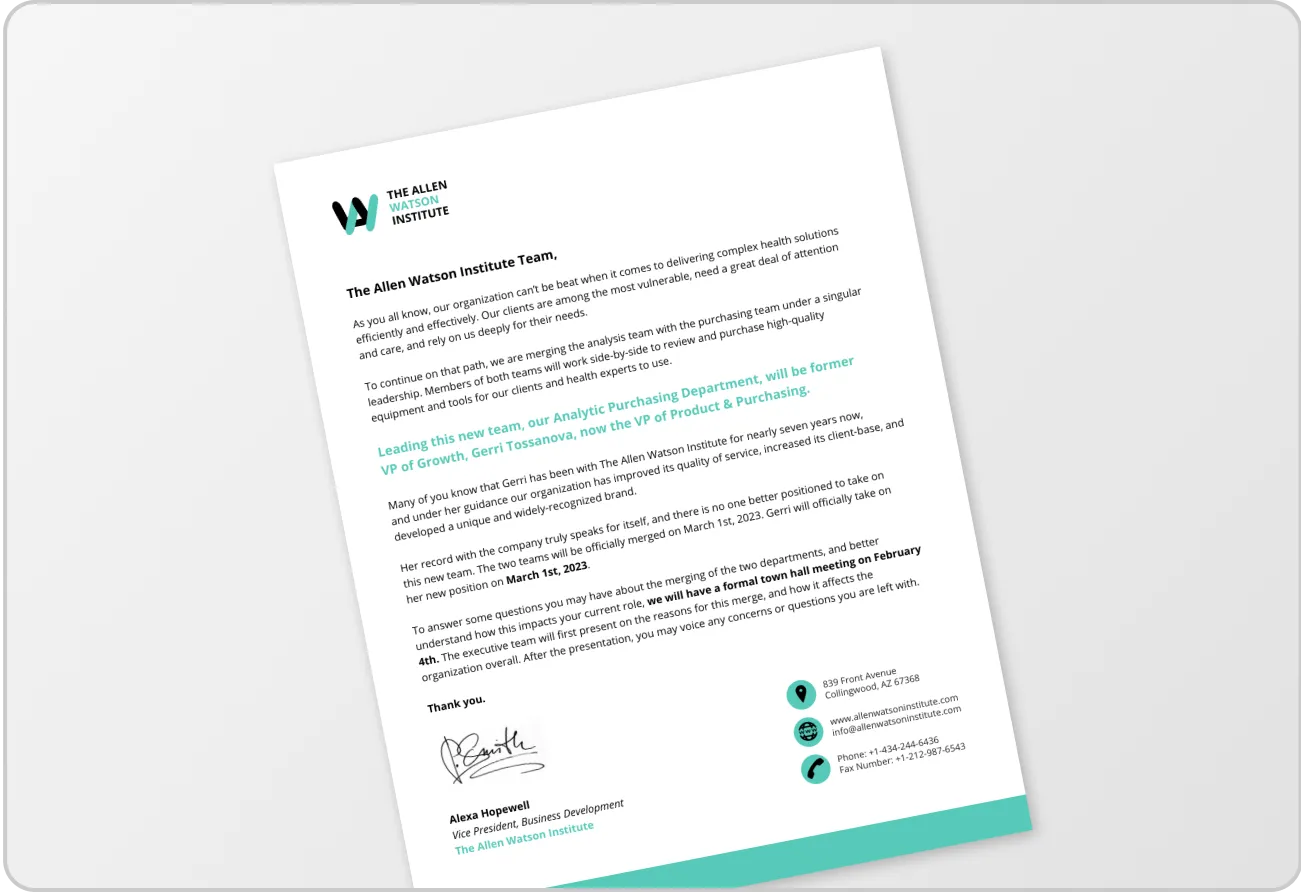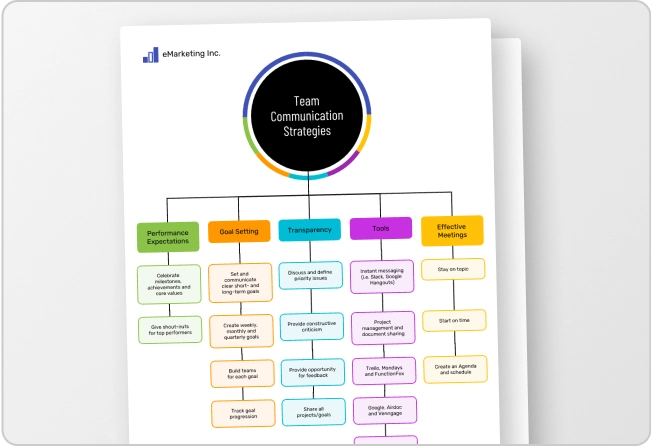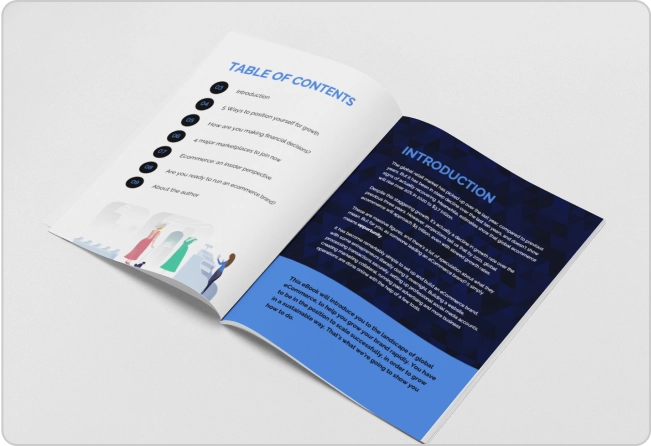
Vertical timeline templates have become one of my secret weapons as a marketer. I used to struggle with cramming project milestones or campaign steps into slides without it turning into a messy block of text, but once I tried laying things out vertically, everything just clicked.
It’s such a simple way to show progress, deadlines, or even content calendars in a way that feels clean and easy to follow. In this post, I’ll share a few vertical timeline examples I’ve actually used, when they come in handy, and some quick tips I’ve picked up while building them using Venngage’s Timeline Maker.
What is a vertical timeline?
A vertical timeline is a visual representation of a sequence of events depicted from the top to the bottom of a page, or along the y-axis.
Vertical timelines can be used to organize information, like important events in history, or upcoming dates and events. Companies use them to help keep tabs on projects, organize calendars, track funding progress and more.
Common uses for vertical timelines include:
- Project planning with milestones: Easily track key dates, deadlines, and deliverables in a clean visual layout.
- Product development stages: Show the evolution of a product from concept to launch.
- Visual resumes or portfolios: Highlight career achievements, skills, and experiences in a standout format.
- Company history infographics: Share your brand’s journey from founding to present day in a way that’s easy to scan.
Vertical timeline vs. horizontal timeline
Both formats serve the same purpose: to visualize information over time. The difference lies in the layout. Vertical timelines work best when space is limited (like mobile screens) or when you want a more linear, scroll-friendly experience. Horizontal timelines are great for presentations or wide-format visuals where you have more space to spread out events side-by-side.
Vertical timeline templates
While infographics are one of my favorite ways to use vertical timelines, they’re certainly not the only way. Here are some other uses for vertical timelines.
Just pick one of these vertical timeline templates and you can easily customize it with your events and brand colors.

This simple vertical timeline template is ideal for exploring the steps of a project, as this example does. It’s ideal for timelines that will need to be printed out, so be sure to consider whether all of your milestones will fit.

Here’s a vertical timeline template that wouldn’t translate as well to print, but it takes a cool approach, starting in the top right corner and zig-zagging across the page in a visually appealing way.

Customize this vertical timeline template when you’re planning an event to keep everyone on the same page with what to expect. Color-coding is useful here to denote time of day or type of event.
Vertical timeline infographic examples
Let’s take a look at some examples of vertical timeline infographics, which are probably my favorite reason to use a timeline — especially a vertical one that’s going to live online.
When you’re creating something for print, you’re bound by the restrictions of physical media, but online, anything goes…

What I love about this vertical timeline infographic is the clever use of a double-helix image that serves as the line in the timeline. It’s just plain cool, and because it’s in a subtle light gray color, the events are still the stars of the show.

Here’s another take on the same topic that goes in a decidedly different direction, opting for maximalism instead of minimalism. The effect is just as eye-catching, though, as the reader can see at a glance exactly what happened in which era.

This science education timeline infographic uses a trendy illustration style to help engage and guide readers along the timeline. At the same time, the text is kept to a minimum to ensure the information is easy to consume.

This school history timeline infographic takes full advantage of its digital-native nature, taking up quite a bit of vertical space. A design like this is ideal when you have lots of events that must be included in your timeline and you don’t want to pare anything down.

Here we see a vertical timeline infographic that takes a unique approach. While it’s vertical and the events bounce from side to side, which we’ve seen in many of the other examples on this page, it also takes advantage of data visualization by scaling the circles representing each disease based on data. Neat, right?
Vertical timeline design tips
Here are a few vertical timeline design tips that can help you decide if this type of graphic is right for your story. Plus, some pointers to ensure your timeline is engaging and effective.
Start with the oldest date
I’ve said this already, but it bears repeating. I’ve seen many a designer get this wrong, and it makes a timeline just about impossible to understand.
Regardless of why you’re creating a timeline for your business, in almost every case, the event nearest to the top of the page should be the one furthest in the past. Here’s perhaps the lone exception:

Because this timeline runs alongside a fundraising graphic, it does make sense to start with the newest date rather than the oldest. That’s because the primary use of this particular fundraising timeline template is to track how much money has been raised to date.
To further illustrate this point, let’s look at a what-if. This timeline infographic visualizes the bizarre events that led rapper Ye (Kanye West) to purchase the conservative social media site, Parler. As you can see in the flipped version, starting with the most recent date means people have to essentially read backward.
Think of your timeline like telling a story; you generally start with the beginning, right? If you were telling a fairy tale, you wouldn’t start with “… and they all lived happily ever after.”
Decide on event and line placement
Yes, a timeline usually has a line, though that’s not always literal. But whether or not your timeline has a line all the way down the page, you need to think about how your events will look best.
Here are some examples and why they work:

This timeline infographic uses a dotted line placed along the left side of the frame with events in boxes (in this case a class syllabus). To the right of the line are details about each week’s tasks and a graphic further illustrating the tasks. This works largely because of the graphics. Without them, the frame would feel imbalanced.

This vertical company history timeline illustrates a way of having all events on the timeline on one side and the line on the other. This works because of the amount of content and the shorter length of the timeline itself. It’s easy to see how this type of timeline could become too visually boring to work, if you had more content.

This vertical history timeline has a line running down the center, with the time of events on the left and details about them on the right. Events have details of varying word counts, which helps give the readers’ eyes a break and create a well-balanced composition.

This creative vertical timeline doesn’t actually have a line. Instead, the designer visualized the events as branches of a tree that bounce from left to right all the way down the page.
This works because the text showcasing the years is among the largest pieces of copy on the page; if they were much smaller, readers would be too confused to understand what they were seeing.

In this planning process timeline infographic, events alternate from left to right down the page, which helps reduce the total amount of space needed. This type of design may be appropriate if you’re concerned about keeping your timeline to a specific size. For example, if you needed to print it on letter-sized paper.
Make sure the dates stand out
Whether you make the date (or other time-based description) of the events bold, larger or a contrasting color, emphasizing these elements will help your reader understand how to consume the information at a glance.
Here are some examples:

In this product timeline infographic, the year certain events occurred are the largest text on the entire page. There’s no way any person reading this could be confused about the sequence of events.
Here’s an example of using graphics to make dates on a timeline stand out. Rather than making “WEEK ONE” bigger than “UNDERSTAND,” the designer used a clever pie chart to visualize how time will pass in the project, which draws readers’ attention immediately.
How do you make a vertical timeline?
Creating a vertical timeline is easier than you might think, especially with Venngage’s Timeline Maker. I’ve used it for everything from campaign planning to content calendars, and the drag-and-drop setup makes the whole process feel effortless.
Here’s how to build one:
- Pick a vertical timeline template from Venngage’s library that fits your use case, whether it’s for project planning, event tracking, or a visual resume.
- Add your key dates, milestones and descriptions, placing them in chronological order from top to bottom.
- Customize the design by tweaking fonts, icons, brand colors and even background images to match your message and style.
- Once you’re happy with the design, you can download your timeline as a PNG, PDF or PowerPoint file, or share it online with a private link.
You can design your timeline with a centered layout, or offset the line to one side—it all depends on your content and what you want to emphasize. And yes, while you can create a timeline in Word, trust me—Venngage is a much smoother experience.
Need more design pointers? Check out our full timeline creation guide for extra tips.
Vertical timeline FAQ
How is a vertical timeline different from a horizontal one?
A vertical timeline arranges events from top to bottom, making it ideal for mobile viewing or scrolling through content step-by-step. Horizontal timelines, on the other hand, run left to right and work well for presentations or wide-format visuals.
What are the best tools to create vertical timelines?
Venngage’s AI Timeline Generator is a top pick. It instantly generates a timeline design based on your input, and everything is fully customizable, from the layout and icons to the fonts and colors. It’s a fast, beginner-friendly way to create a polished vertical timeline without starting from scratch.
Can I print a vertical timeline from Venngage?
Yes! You can easily download your vertical timeline as a high-quality PNG or PDF file and print it for handouts, posters or reports.
Are there vertical timeline templates for PowerPoint?
Absolutely. Venngage lets you export your vertical timeline as a PowerPoint file (.pptx), so you can drop it straight into your presentation with zero hassle.
Vertical timelines are among the chart and data visualization types that are easiest to read, as they’re incredibly intuitive for your audience. For brands, they’re also extremely versatile, so it pays to use this type of visual in your business communications.
I hope the vertical timeline examples I shared today have given you some good inspiration. If you’re feeling ready to make your own vertical timeline, check out Venngage’s template library for the perfect starting point.

































